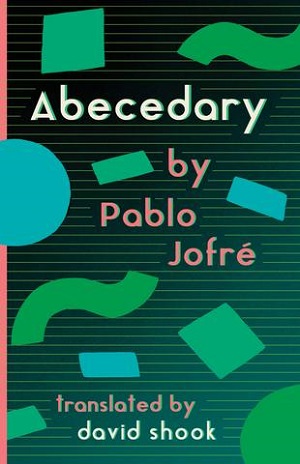 Abecedary, by Pablo Jofré
Abecedary, by Pablo Jofré
Review by John Venegas
Is it too much to describe the act of writing as paradoxical? So often the transcription of words to the page is painted as an effort by humanity to defy our own mortality and exist in conceptual form beyond the tapering of the mortal coil. And yet pages and scrolls decay. Ink bleeds and cracks. Arrangements of zeroes and ones can become corrupted, and hard drives and tablets (stone or electronic) can be shattered. There is something romantic and horrifying about that idea, of defiantly shouting into the voice and, if nothing else, amplifying the echo as best you can. But I think it also tends to overwhelm the idea and power of the present moment. In our post-(butnotreally)-post-modern haste to deconstruct meaning, it becomes all too easy to overlook the fact that in the moment, in your moment, meaning really does exist. It is locked in perpetual motion, constantly evolving and influenced by external forces, but it still exists, processed and filtered and constructed by you. It is unique to you, and while the rest of us may be able to catch glimpses or fragments of it in the right light, only you can ever see it for the beautiful and titanic thing that it is. I think it might be more productive then to think of literature (and, in truth, any art) as a conveyance vehicle by which we try to share snapshots of our meanings. Most of the time, texts do this implicitly or incidentally, existing by their very nature as things that can never be authentically recreated, only replicated. But sometimes a text, even a small one like Pablo Jofré’s Abecedary, can take this impossible gymnastics routine of an existential concept and grab it by the horns. In this collection, Jofré is equal parts poet, philosopher, linguist, mad scientist, human, social critic, and extraterrestrial as he invents a language all his own.
Being present (the waves and their rhythm).
Feeling in your own essence.
Knowing that others exist and communicating with them
through the universe. […]
To save you the Google search (because I already needed to do one), an abecedary is a language primer, oftentimes in the former of a letter table, meant to teach a student about the pieces that a language uses to construct words. Jofré’s Abecedary is a fascinating take on that idea, both because of its necessity and its layout. The collection is a series of poems arranged in alphabetical order, beginning with “Abyss” and culminating in “Zenith”, and, as you might now be guessing, that is not coincidental. Jofré is taking us on a journey from a place of nothing, a place of no meaning and identity, to a place that “is an emotion; human energy / (pure, sweet, sanguine).” Not every letter of the Spanish alphabet is addressed, because while our paths to actualization are often similar they are never the same, and some letters take more time than others, because our lives often stall or meander when the path is obscured.
Immolating yourself is cleaning the body, which was already dead,
and the memory crushed by the world.
Moreover, the poems follow no predictable curve in their emotional state of being. You are as likely to be terrified as you experience “Xenophobia” as you are immersed in “Hue”, because the path is a much a construct made on the spot as anything else. What this all adds up to is a priming of expectations against your better judgment. You have likely read experimental poetry before and you know that your subconscious predictions are rife with inaccuracy, but you’ve also probably learned your ABCs and you might be able to still hear that silly little song in your head. That is just part of Jofré’s genius here. Through just the structural constraint of his text, he makes you aware that you can still be oblivious and even indoctrinated. You might “know better”, but you are still making assumptions that can be ill-advised. Hell, I did it just a moment ago in guessing that you might have heard the ABCs song.
Waking up is the fear of not knowing where one is, who one is.
It is the lack of concepts, of heaven, of homeland,
it is the not knowing if I am lying down or sitting at a table.
And, as it turns out, the idea of thinking you “know better” is critical to both the poems of Abecedary and our world today. We are watching a person being born this collection, someone who perhaps already possessed a frame of reference before finding themselves in the “Abyss”, as they deal with the repercussions of the loss of meaning before welding a new one together. That speaker is bombarded with information, at times recollected from an old life and at times through relentless observation. With each poem and each new piece of information, there is a sense that the speaker may touch on some fundamental truth at the heart of everything, or even the heart of themself. There is a dogged determination in the language, even through its elegant beauty, to keep swimming through the pain and the distraction and grab new pieces to build the monument of meaning. We receive no sugarcoat, no soothing, protective hug; the process of individuality and sisyphean task of definition are painful and overwhelming, made all the moreso when one is being threatened and tortured into accepting someone else’s idea of meaning. Make no mistake: Jofré is not gentle is his critique of how hard we make this already laborious task on one another and ourselves. In particular, “Fear” is mercilessly terrifying poem, not because it blames the idea of being afraid, but what we let ourselves do when we are afraid; the justifications, the destruction, the self-mutilation of external violence.
Shapeless piece of the living being.
Liquid that imperceptibly creeps
and interjects its opinion
This idea that we have to be mindful of our effect on others wraps around beautifully in the poetry to connect again with how meaning is formed. If you believe that you are responsible for your actions and that your perspective is yours, then it would be the height of futile, selfish cognitive dissonance to deny those facts for other people. Jofré is building an alphabet (read: perspective) that is relatable, foreign, and most important of all, human, and in doing so he is not only exercising his right to exist and be heard but calling on the rest of us to do that same. This is baked into Abecedary on every level, even in the fact that many of us will read it as a transliteration. In my particular case, I have a copy that contains both Jofré’s work in the original Spanish, and David Shook’s transliteration into English. Shook’s work, incidentally, is as impeccable as ever. The adjective-noun relationship and placement is one of the biggest differences between Spanish and English in my opinion, and Jofré does not make the translation of his work simple by virtue of the density of his use of language. But there are several moments where, in direct comparison of the two versions, Shook’s tweaking feels lip-smackingly perfect in a way that even someone who speaks both languages might not see coming.
“The kiss it a newborn animal. It speaks, it whines,
It writhes on its placenta. It resists
the abandonment that will come; inevitably.”+++++
“El beso es un animal recién procreado. Habla, gime,
se retuerce en su placenta. Resiste
al abandono que llegará; inevitablemente.”
In his prologue, the brilliant Will Alexander says that “Abecedary condenses via poetic semaphore lingual neutron stars penultimate to incalculable eruption”, and I find the astral metaphor surprisingly apt for what is at play here. We are, in essence, getting to peer into a mind and watch lingual fusion take place. Matter is being rendered and remade, often violently, and the cosmic mind behind it is in awe of the possibility before it. We look up at the sky and see the light of stars that died billions of years ago, and that light changes our lives in immeasurable ways, most of which we cannot understand or anticipate yet. Abecedary is a beautifully apt reminder that, in the universe’s penchant for cycles and equilibriums, that same conceptual causality is going on inside of and between us.
Abecedary is available now through Insert Blanc Press.

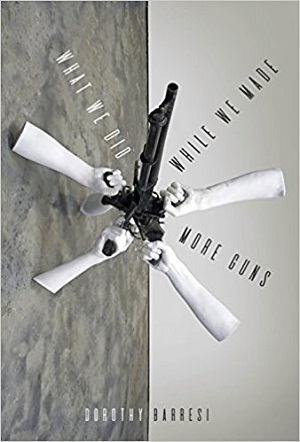 What We Did While We Made More Guns
What We Did While We Made More Guns I Love It Though by Alli Warren
I Love It Though by Alli Warren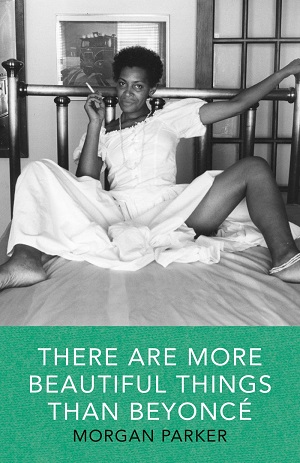 There Are More Beautiful Things Than Beyonce,
There Are More Beautiful Things Than Beyonce, Hover the Bones, By Melisa Malvin-Middleton
Hover the Bones, By Melisa Malvin-Middleton Third-Millennium Heart, by Ursula Andkjaer Olsen
Third-Millennium Heart, by Ursula Andkjaer Olsen The World Goes On, by Laszlo Krasznahorkai
The World Goes On, by Laszlo Krasznahorkai Djinn City, by Saad Z. Hossain
Djinn City, by Saad Z. Hossain Collection by Roger Santiváñez
Collection by Roger Santiváñez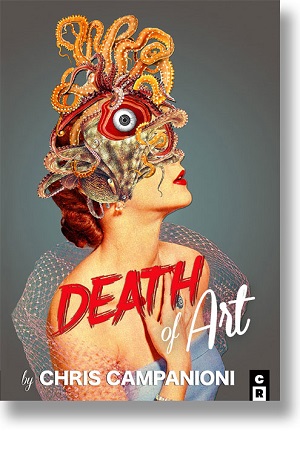 Novel by Chris Campanioni
Novel by Chris Campanioni Novel by Dasa Drndic
Novel by Dasa Drndic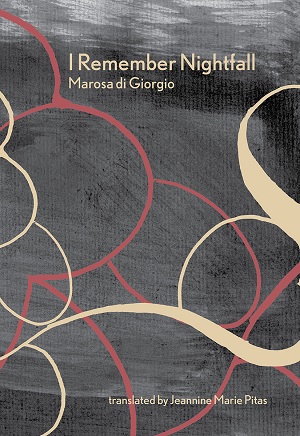 Poetry collection by Marosa di Giorgio
Poetry collection by Marosa di Giorgio